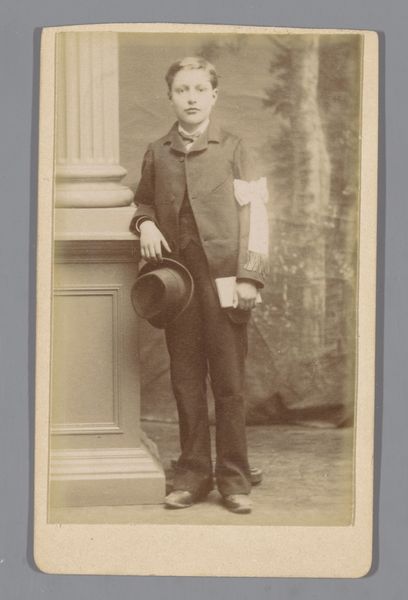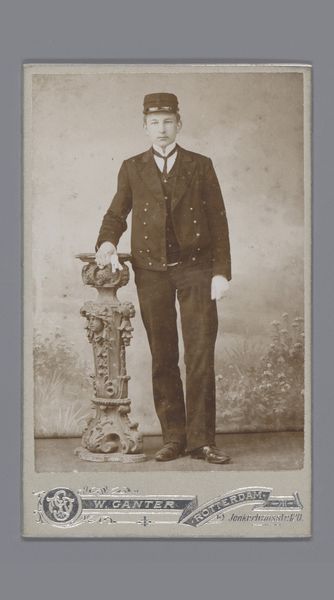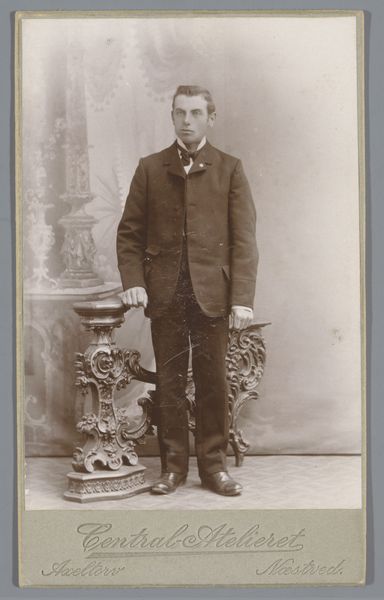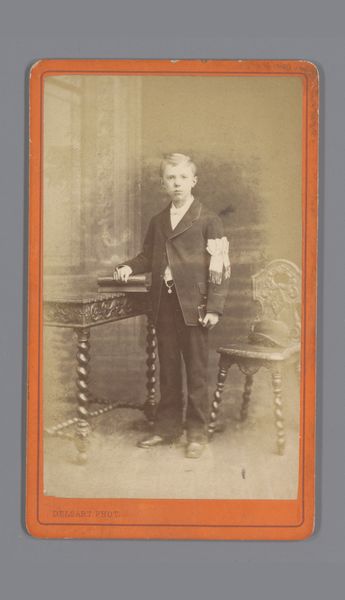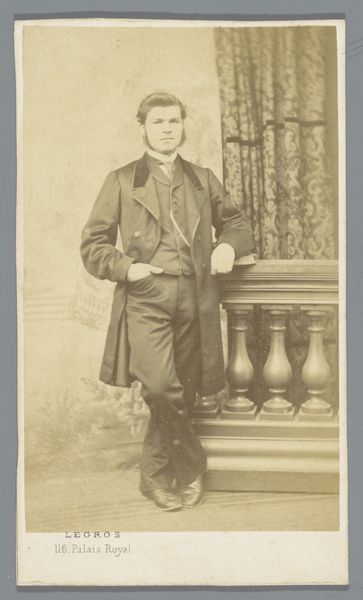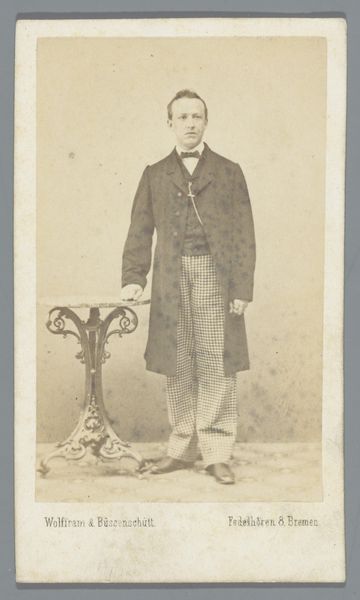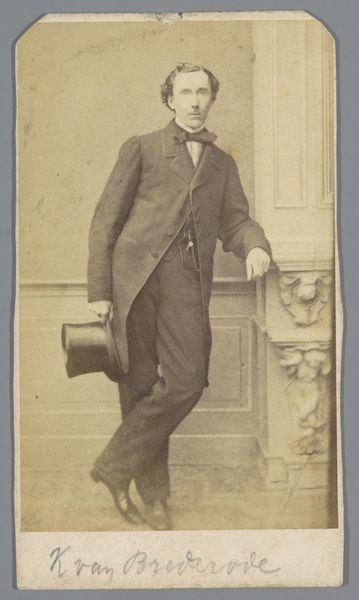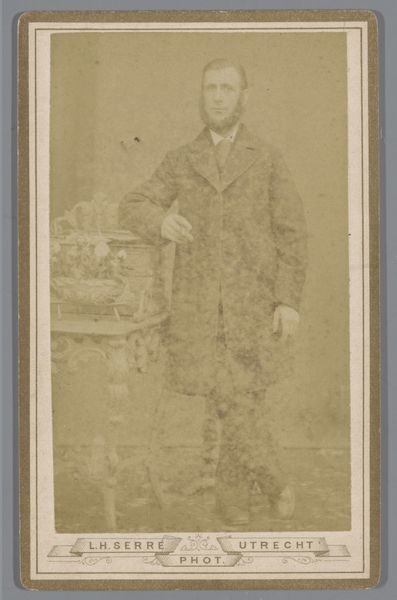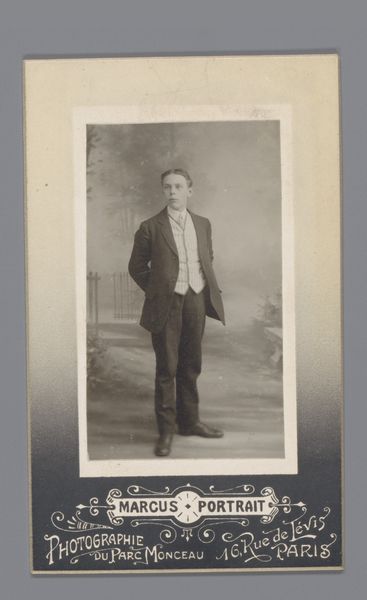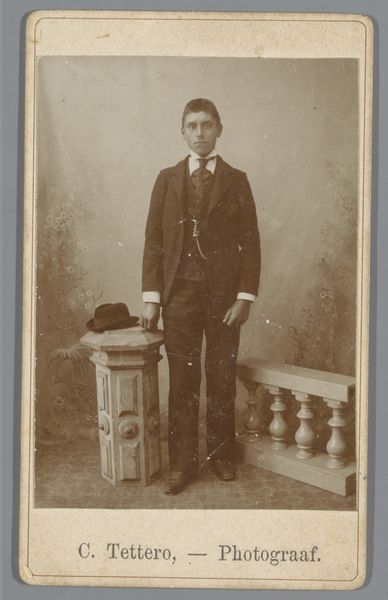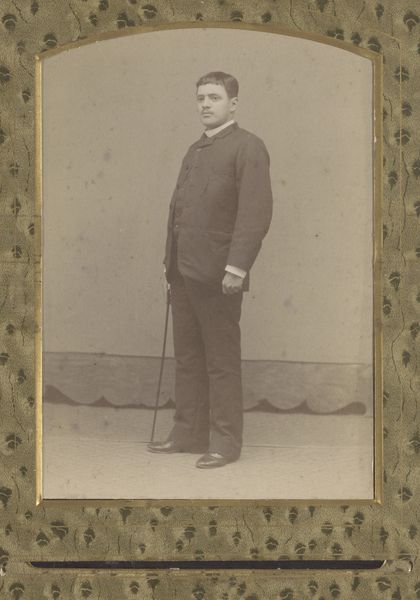
Portret van een onbekende jongen die vermoedelijk communie gaat doen c. 1890 - 1930
0:00
0:00
print, photography
#
portrait
# print
#
photography
#
historical fashion
#
history-painting
#
realism
Dimensions: height 166 mm, width 104 mm
Copyright: Rijks Museum: Open Domain
Curator: This striking photographic print by Henri Bickhoff, produced somewhere between 1890 and 1930, captures the likeness of an unknown boy, speculated to be on the cusp of his First Communion. Editor: It has this palpable stillness to it, a sort of serious introspection. The sepia tones and the young boy's solemn gaze give it a dreamlike, nostalgic quality. It makes me consider innocence and preparation. Curator: It's an intriguing piece, precisely because its subject is unknown. The lack of identifying information thrusts this individual into a broader social context, symbolizing the many young people undergoing religious rites of passage in that era. Bickhoff, working in Amsterdam, perhaps recognized the commercial appeal of such imagery. Editor: Absolutely. His attire speaks volumes. That three-piece suit, the pocket square—they are markers of formality, ritual. What stands out most to me is the book he's holding. It feels very deliberately posed, an emblem of knowledge, faith, tradition being passed down. And that backdrop of classical architecture enhances the sense of significance, does it not? Curator: It's quite contrived, that backdrop; studio photographers often employed them, creating standardized settings. It speaks to the performance inherent in early portraiture. Yet that is the photograph's own ritual and iconography, establishing an expectation and cultural value on display, where identity becomes intertwined with social appearance. Editor: Yes, precisely. The standardization allows us to interpret more, making it less about one person, and more about the journey that any boy in that society was undertaking, his relationship with religion and knowledge. A journey echoed through so many lifetimes. It really does make you think about how such ceremonies shape individual and collective identities. Curator: Indeed, considering the evolving roles of institutional religion and its influence on individual experience—it underscores how visual artifacts such as this can serve as portals into bygone eras. Editor: Well said. It's images like these that allow us to touch the past. To remember the faces and stories behind our shared history.
Comments
No comments
Be the first to comment and join the conversation on the ultimate creative platform.
